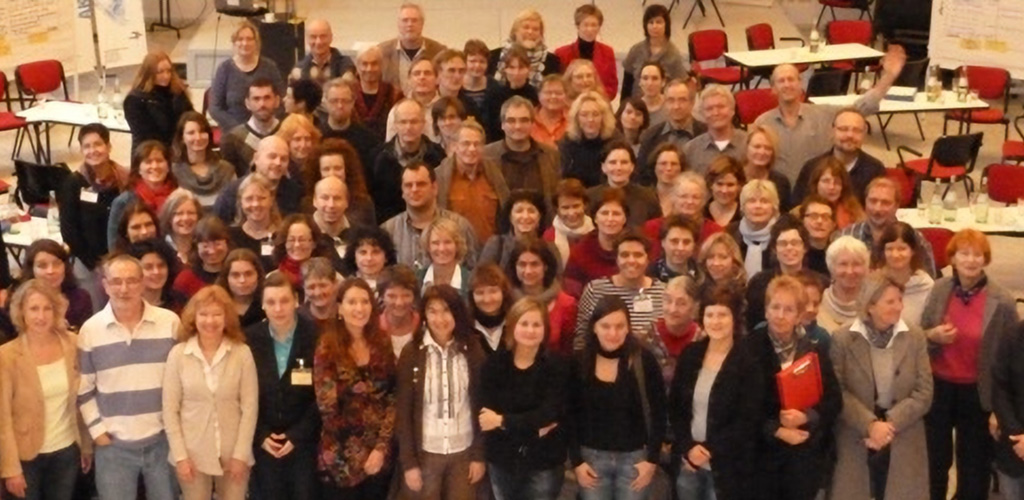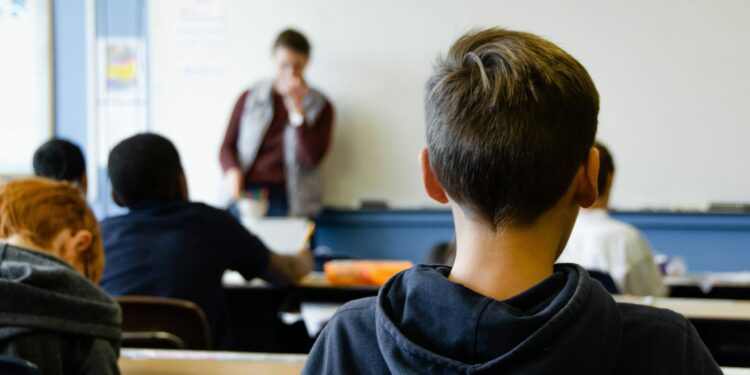The No-Blame Approach was developed in the UK in the early 1990s by psychologist Barbara Maines and educator George Robinson. Even in severe bullying cases, this approach encourages educators and psychologists not to blame and punish the perpetrators, except for criminal offenses. Two German mediators, Heike Blume and Detlef Beck, simplified the approach further and have trained more than 20,000 educators in Germany, Austria, and Switzerland since 2003.
Switzerland is number one in bullying, according to the global 2018 PISA (Programme for International Student Assessment) study by the OECD (Organisation for Economic Co-operation and Development). The survey shows a rise in school bullying since the previous PISA survey in 2015, with the rate of physical bullying more than doubling in Switzerland.
Bettina Dénervaud can only speculate about the reasons: “Maybe the pressure to perform?”
Experts agree that bullying can cause severe harm, including depression and anxiety, self-harm, health complaints, and decreased academic achievement. “If this issue is not dealt with, the harm can persist for many years, even into adulthood,” Dénervaud observed. A Washington Post analysis found nearly 200 incidents in the US in recent years when a bullied student took his or her own life.
 VIRTUALLY all experts agree that it is best to act preventatively or intervene at the first signs of bullying rather than hoping the issue might resolve itself on its own. Photo: Sam Balye, Unsplash
VIRTUALLY all experts agree that it is best to act preventatively or intervene at the first signs of bullying rather than hoping the issue might resolve itself on its own. Photo: Sam Balye, Unsplash
Almost every fifth student in the US and Europe says they have experienced bullying. Nearly half of teens say they have been the victim of cyberbullying, according to a 2022 survey by the Pew Research Center. In the US, most states have enacted laws against bullying, but how they are implemented on the ground varies greatly, not only from state to state but also from school to school.
Dénervaud has been a language teacher for more than two decades, mostly for adults but also for teenagers and children. Because parents, students, and teachers frequently asked her for advice on bullying, she grasped the enormity of the need. She decided to focus on that issue.
“I realized there were not a lot of specialized offerings. In the standard teacher training, the topic is addressed in a two-hour lecture, which simply isn’t sufficient.” Concerned parents or teenagers are often told to call the mental health hotline, Dénervaud says, “but it usually offers general psychological advice, not specifically how to proceed and what the next steps should be regarding bullying.”
Hers is the only office in Switzerland dedicated to the issue of bullying, though the magnitude of the problem is rising worldwide.
She and her two colleagues get about 10 calls a week, she says, “mostly from parents or from schools who request training for their staff.” She is frustrated by what she sees as a failure of schools to take the issue seriously.
“We often hear, ‘Oh, the kids will sort it out.’ We sometimes see glaring inaction by the schools who try to dodge responsibility,” Dénervaud says. “Too often, we learn that the schools do nothing, or even worse, they put the victim and the perpetrator at one table and expect them to sort it out. That’s almost always counterproductive.”
In Dénervaud’s experience, punishing the perpetrators tends to worsen the bullying for the victim. “Usually, the bullies will make the victim ‘pay.’ Or the victim gets sent into therapy, enforcing the feeling there must be something wrong with him or her, because they are singled out and need to get help, while no intervention happens with the bullies.”
Somewhat surprisingly, Dénervaud says in her experience, bullying is not tied to specific victim characteristics, such as weight, looks, or social status. However, data shows LGBTQ+ students are at a significantly greater risk of bullying than their peers.
“Contrary to what most people believe and what I, too, believed at the beginning, there is no ‘typical’ bullying victim. Anybody can be singled out to become the victim of bullying,” she says. “That’s why focusing on what is perceived as being ‘wrong’ with the target, such as losing weight or changing their looks, does not work.”
She sees the underlying causes of bullying in the social dynamics at a school. The nerd with glasses bullied in one school might be envied in another community for his smarts.
 IN RECENT years, two conferences on the “no-blame” approach were held, with the participation of 150 people, whose contributions helped consolidate the model. Photo: courtesy of Hilfe bei Mobbing.
IN RECENT years, two conferences on the “no-blame” approach were held, with the participation of 150 people, whose contributions helped consolidate the model. Photo: courtesy of Hilfe bei Mobbing.
This is part of why Dénervaud is convinced parents and bullying victims must not be left alone to solve the issue. “These parents are often desperate and sometimes even sell their home and leave the community they were a part of, uprooting the siblings, too, to send their kid to a different school,” she explains. In Switzerland, parents have to send their kids to the public school closest to their zip code unless they can afford the tuition for private schools.
Because she tried in vain to get public funding and make her service free, Dénervaud and her two colleagues have to charge either the parents or the schools for the consultations and training. “I wish we could offer it for free,” she says.
She sees limits to the No-Blame Approach “when bullying has gone on for too long, sometimes for years. Then the patterns are so ingrained that removing the victim from the situation might be the best solution.” And sometimes, she admits, the approach is poorly implemented. “Then we intervene or try the approach again with a different group of students.”
When bullying turns into criminal behavior, she recommends involving the authorities. One of the worst cases in her practice was that of a student who was made drunk and severely sexually abused. “He ended up leaving that school because the abuse had also been documented on video and circulated at school, and there was no way for him to go back there,” she says. “But the school then still needs to work with the students who stay there.”
Other approaches that have shown success include the Olweus Bullying Prevention Program, which involves the entire school; KiVa, a method developed at the University of Turku, Finland, with funding from the Ministry of Education and Culture, that claims to have helped 98% of students; and Positive Action.
Virtually all experts agree that it is best to act preventatively or intervene at the first signs of bullying rather than hoping the issue will resolve itself.
In Ben’s case, the intervention was successful. After a month, his stomach pains stopped, and he looked forward to attending school again. – Rappler.com
About the author. Michaela Haas, Ph.D., is a Contributing Editor at Reasons to be Cheerful. An award-winning author and solutions reporter, her recent books include Bouncing Forward: The Art and Science of Cultivating Resilience (Atria). Visit www.michaelahaas.com
This story was originally published in Reasons to be Cheerful (US), which gently shared this story to be republished within the Human Journalism Network program, supported by the ICFJ, International Center for Journalists.

Source link : https://www.rappler.com/world/europe/switzerland-no-blame-approach-schools-invite-bullies-help-bullied/
Author :
Publish date : 2024-06-08 09:00:00
Copyright for syndicated content belongs to the linked Source.


